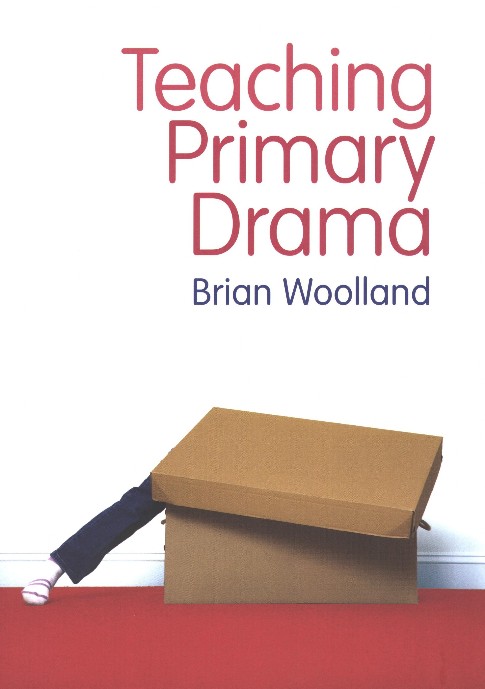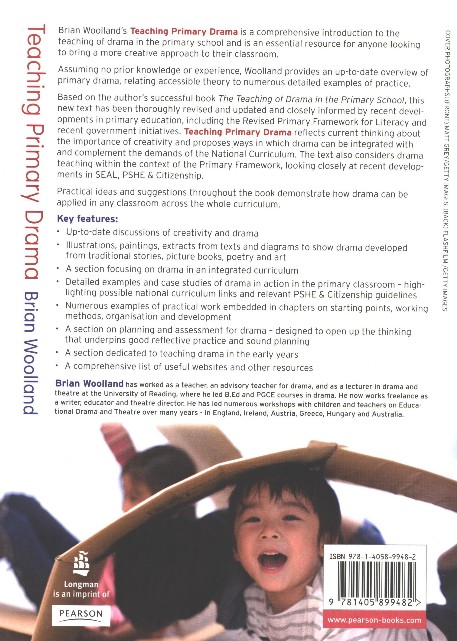Teaching Primary Drama


Teaching Primary Drama
Extracts from reviews
‘A really valuable book…
… It is possible simply to select one of the activities, grow it to a follow-up stage and leave it there as a practical exploration of other subjects, typically history. This would at the very least progress from the current over-kill of stage one hot-seating and start to move the edges of drama forward into a more varied and textured language for learning. Similarly, the teacher who is bolder and has covered more can select from the more ambitious ideas trying a more complex integrated curriculum exploration led by Drama.
Teaching Primary Drama also grasps the nettles other texts tend to avoid. For example, we are always being reminded about good quality questioning but Woolland provides several contextualised examples of these. He also addresses problems like groupings, the use of magic, and the issues which can arise from teacher selecting the wrong role. Neither does he shy away from giving straight guidance: easy bulleted lists of things to remember while planning and while teaching are really helpful to those trying out Drama for the first time.
The book travels from games to integrated curriculum; it provides visual aids and texts; it most importantly tracks Drama from play and provides guidance on how to help play progress into Drama and even broaches the difficult area of assessment. Yet it is written in simple terms, uncluttered by references, is refreshingly straightforward and succinct and does not fall into the trap of making a complex subject sound complex; a trait of some texts which can push nonspecialists away.’
Amanda Kipling
London Drama Magazine. Summer 2010
‘… This book is an extremely useful tool for those new to teaching drama and the already confident practitioner. The techniques are not simply explained but explored in depth, extended and developed with the reality of working with children firmly in mind. Woolland’s breadth of experience and understanding of what motivates and excites children of all ages is evident and you continually feel like you’re in safe,
knowledgeable hands, whilst he never condescends. The examples are tried and tested and full of helpful hints for all teachers. The extended plans offer simulating starting points, particularly those new to planning in this rigorous but creative way… This is not only a great read for a strong foundation in teaching drama in the Primary setting but also a brilliant tool to have to hand when planning, and one which can be used repeatedly.’
Ruth Saxton
The Journal, NATD.
Volume 27, Issue 1. Spring 2011